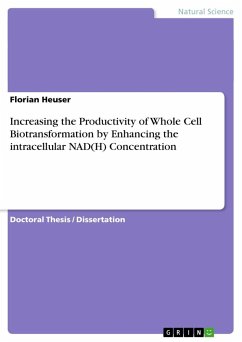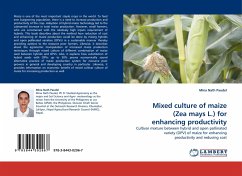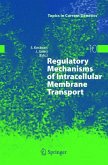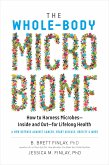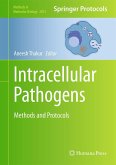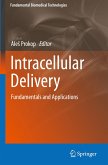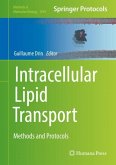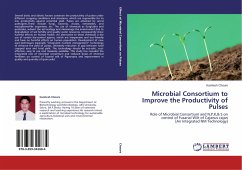Doctoral Thesis / Dissertation from the year 2007 in the subject Biology - Micro- and Molecular Biology, grade: magna cum laude, University of Dusseldorf "Heinrich Heine" (Institut für Biotechnologie I, Forschungszentrum Jülich), language: English, abstract: The aim of this work was to limit the intracellular NAD turnover and to increase the intracellular NAD concentration in Escherichia coli in order to construct a strain characterized by higher productivity and improved long-term stability in the reductive whole-cell biotransformation. To this end, first the genes yrfE and yjaD were deleted, which code for the NADH-pyrophosphatases that probably play a part in intracellular NAD degradation. After deletion of these genes, the specific activity of the NADH-pyrophosphatase in the raw extract was reduced by 70%. By overexpressing the genes pncB and nadE from the NAD biosynthesis it was possible to double the intracellular NAD concentration. The joint overexpression of the two genesincreased the NAD pool by a factor of seven.A recombinant strain of E. coli for obtaining mannitol from fructose was the reference system for studying whether the mutations in the NAD metabolism influenced the long-term stability of whole-cell transformations. Here, fructose was reduced to mannitol by a mannitol dehydrogenase from Leuconostoc pseudomesenteroides. The cofactor NADH was regenerated by a formate dehydrogenase from Mycobacterium vaccae N10. The uptake of fructose was made possible by a glucose facilitator from Zymomonas mobilis. In the present study, it was foand that during the biotransformation the cells lost NAD(H) via a permeabilized cell membrane. The cause of cell permeabilization was foand to be an accumulation of mannitol in the cell, which led to bursting of the cell due to increased osmotic pressure. By cloning a putative mannitol transport gene from L. pseudomesenteroides, it was possible to increase long-term productivity of the recombinant E. coli, so that after three days of biotransformation the mannitol yield was increased by 20%. Biochemical characterization revealed that the putative mannitol transporter is a secondary carrier specific for fructose.
Hinweis: Dieser Artikel kann nur an eine deutsche Lieferadresse ausgeliefert werden.
Hinweis: Dieser Artikel kann nur an eine deutsche Lieferadresse ausgeliefert werden.

